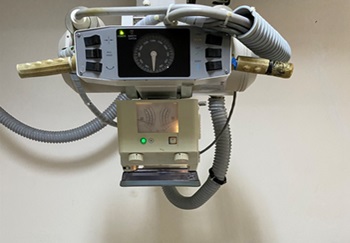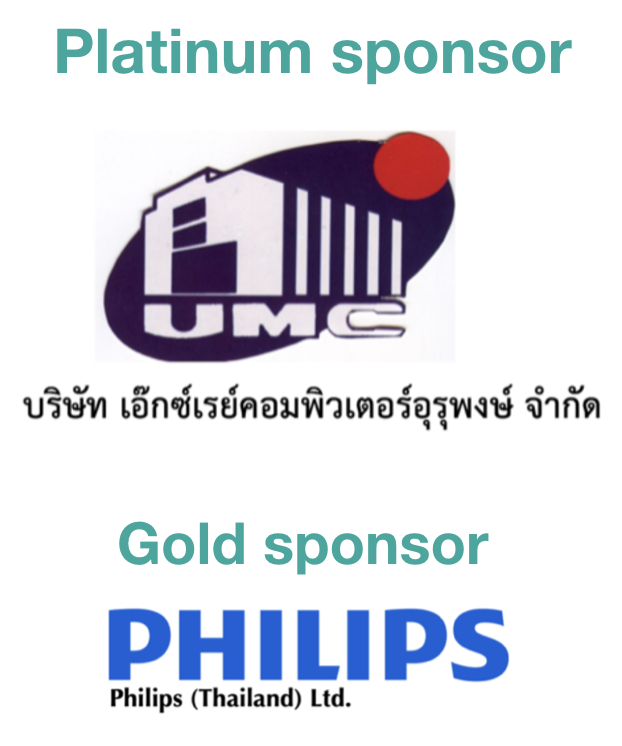Assessment of Entrance Surface Air Kerma from Chest X-ray Examination at Klongthom Hospital
Keywords:
Entrance Skin Dose, Entrance Surface Air Kerma, Diagnostic Reference LevelsAbstract
Introduction: Entrance Surface Air Kerma (ESAK) obtained from radiographic chest x-ray examination should be evaluated for optimizing radiation exposure to patients. This work aimed to evaluate the radiation dose in terms of ESAK of the patients who underwent radiographic chest radiography examinations at Klomthom Hospital and to compare the ESAK with the Thailand National Diagnostic Reference Levels (NDRLs) and the other studies. Methods: The ESAK was calculated using the radiation output of a radiographic machine and backscatter factor (BSF) obtained from a total of 100 chest radiographic patients. The radiation output was carried out with Piranha x-ray dosimeter. Values of typical dose level was established using the median of ESAK. Results: The results revealed that the mean, median and 75th percentile of ESAK for posterior-anterior (PA) chest radiography at Klongthom Hospital were 0.12 mGy, 0.11 mGy and 0.14 mGy, respectively. The median ESAK of the patients in this study was lower than the 75th percentile ESAK of national DRLs and comparable to the ESAK values published in the literatures. Conclusion: Entrance Surface Air Kerma derived from radiographic chest x-ray examination using exposure parameter settings in our hospital was within the acceptable level and DRLs.
Downloads
References
International basic safety standards for protection against ionizing radiation and for the safety of radiation sources: safety series no. 115. Vienna, Austria: IAEA, 1996.
Toüa L, van der Merwe B, van der Linde B. Chest radiography: optimising the radiation dose at industrial mines in the Northern Cape province of South Africa. Occupational Health Southern Africa. 2022; 28(1): 4-10.
International Commission on Radiological Protection-103. Recommendations of the international commission on radiological protection. Annals of ICRP. Oxford: Pergamon Press; 2007.
International Atomic Energy Agency. Dosimetry in diagnostic radiation: an international code of practice, technical report series no. 457. Vienna: International Atomic Energy Agency; 2007.
กรมวิทยาศาสตร์การแพทย์ กระทรวงสาธารณสุข.ค่าปริมาณรังสีอ้างอิงในการถ่ายภาพรังสีวินิจฉัยทางการแพทย์ของประเทศไทย 2564. กรุงเทพฯ: บริษัท บียอนด์ พับลิสชิ่ง จำกัด; 2564.
ศุภวิทู สุขเพ็ง. การวัดปริมาณรังสีเอกซ์จากการตรวจวินิจฉัย และแนวทางการใช้รังสีอย่างเหมาะสม. พิษณุโลก: สำนักพิมพ์มหาวิทยาลัยนเรศวร; 2559.
Japan Association on Radiological Protection in Medicine. (2017). Diagnostic reference levels based on latest surveys in Japan 2015. Cited November 29, 2017, Available from http://www.radher.jp/J-RIME/report/DRLhoukokusyoEng.pdf.
Hart D, Shrimpton PC. Fourth review of the UK national patient dose database. Br J Radiol. 2012; 85(1018): e957-8.
Witchathorntrakun W, Wongsanon S and Kheonkaew B. Skin Radiation Dose of Patient Undergoing Chest Radiography in Srinagarind Hospital, Faculty of Medicine, Khon Kaen University. Srinagarind Med J. 2010; 25(2): 120-24.
Netwong Y. The evaluation of Entrance Surface Air Kerma from conventional diagnostic radiography in Prasat Neurological Institute using Dose Area Product values. Journal of the Department of Medical Services. 2020; 45(3): 90-97.

Downloads
Published
How to Cite
Issue
Section
License
Copyright (c) 2023 The Thai Society of Radiological Technologists

This work is licensed under a Creative Commons Attribution-NonCommercial-NoDerivatives 4.0 International License.
บทความที่ได้รับการตีพิมพ์เป็นลิขสิทธิ์ของสมาคมรังสีเทคนิคแห่งประเทศไทย (The Thai Society of Radiological Technologists)
ข้อความที่ปรากฏในบทความแต่ละเรื่องในวารสารวิชาการเล่มนี้เป็นความคิดเห็นส่วนตัวของผู้เขียนแต่ละท่านไม่เกี่ยวข้องกับสมาคมรังสีเทคนิคแห่งประเทศไทยและบุคคลากรท่านอื่น ๆในสมาคม ฯ แต่อย่างใด ความรับผิดชอบองค์ประกอบทั้งหมดของบทความแต่ละเรื่องเป็นของผู้เขียนแต่ละท่าน หากมีความผิดพลาดใดๆ ผู้เขียนแต่ละท่านจะรับผิดชอบบทความของตนเองแต่ผู้เดียว




